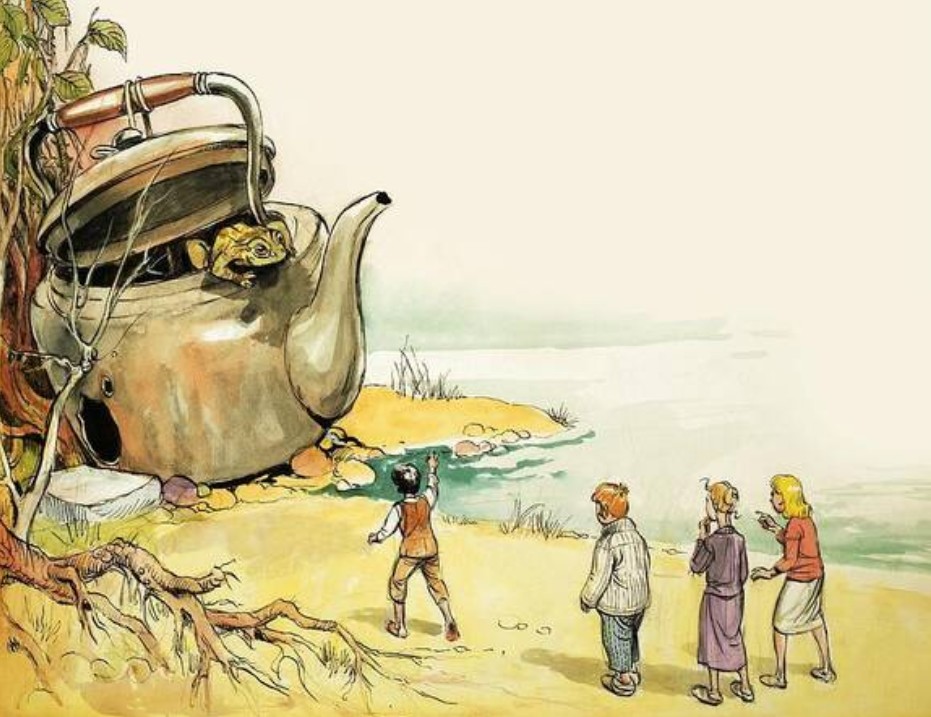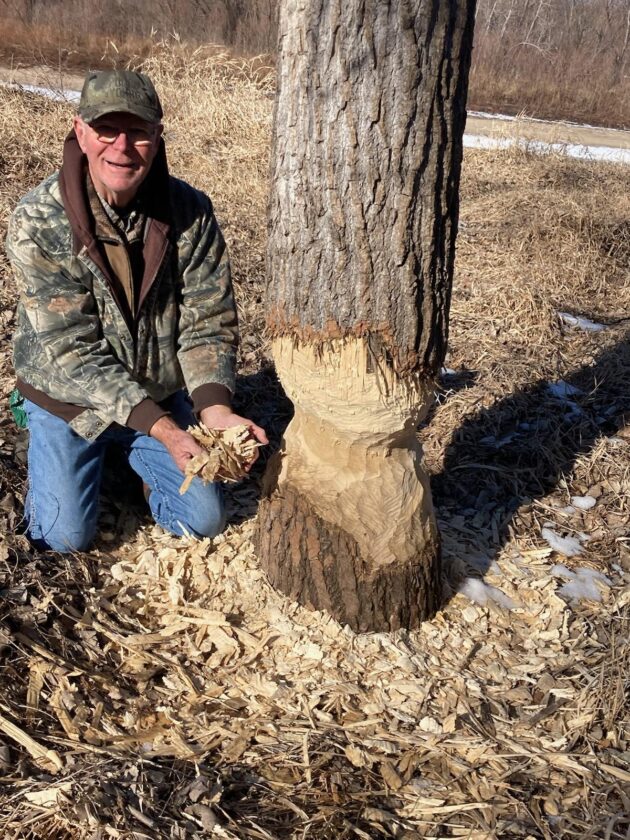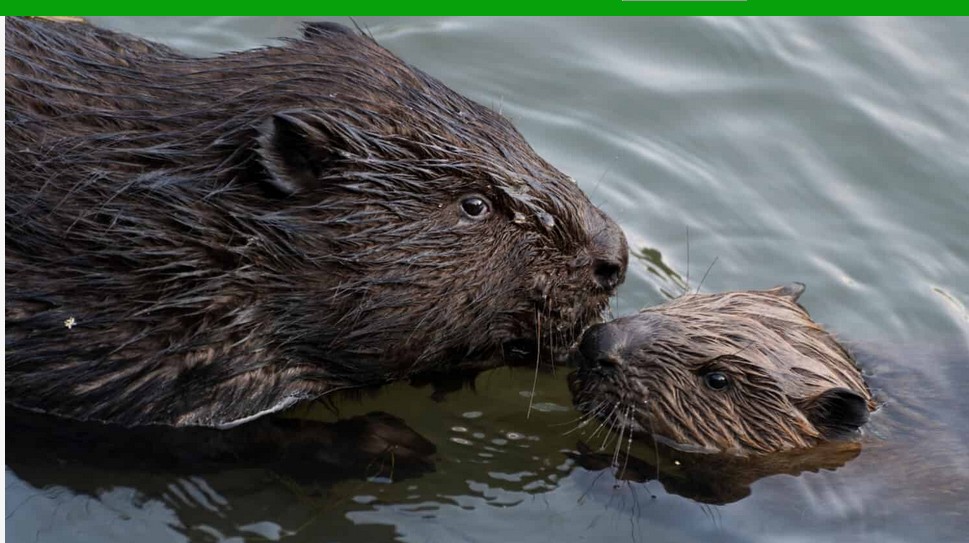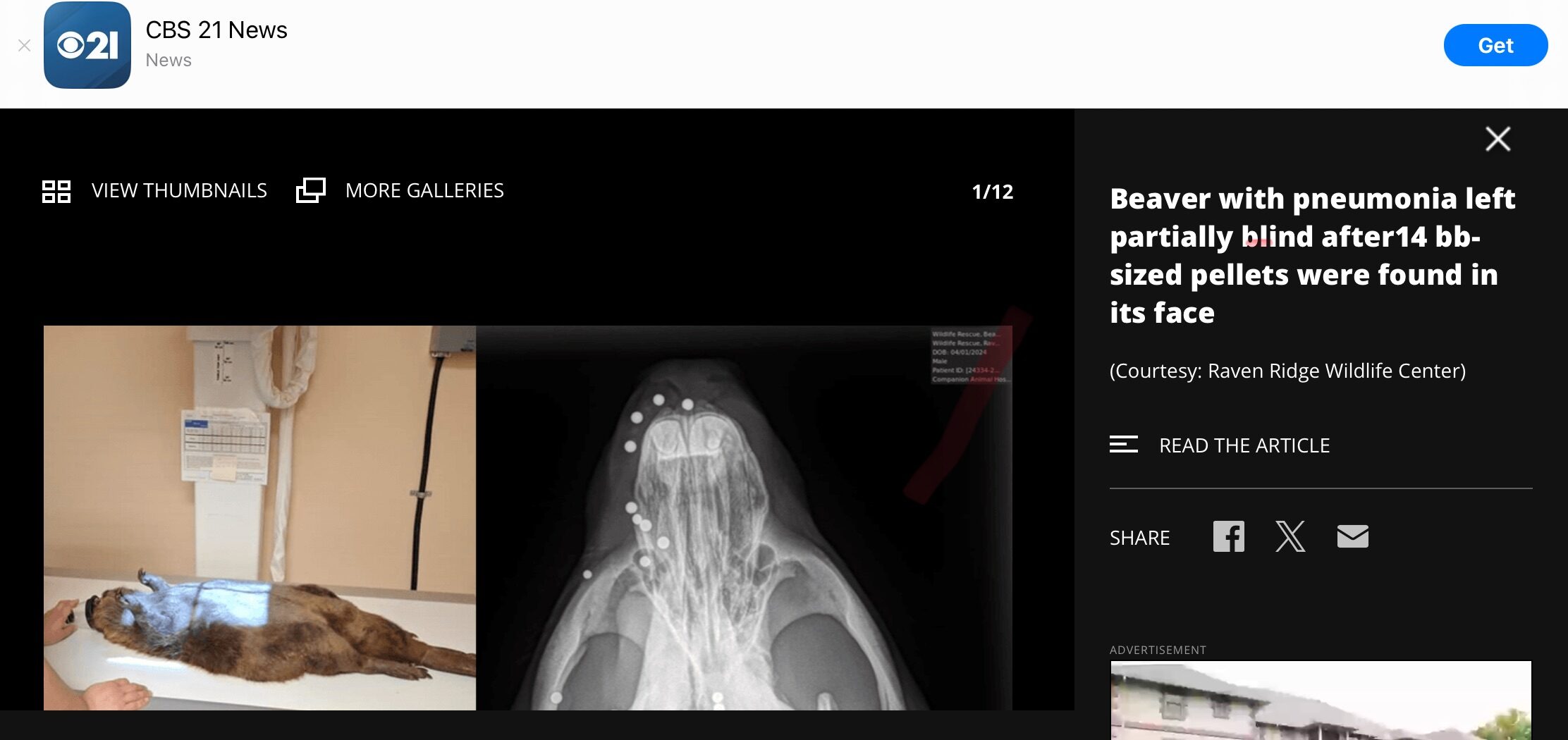 Coming across a fresh pile of wood chips next to a newly chewed tree is kind of magical. It’s like a sign that there’s another world happening while we are asleep. I remember as a child be fascinated by the story of “The Borrowers” Who were a tiny family that lived unknown in your house and came at night to collect the leftover thread spools or wine corks which to them were as big as dining tables.
Coming across a fresh pile of wood chips next to a newly chewed tree is kind of magical. It’s like a sign that there’s another world happening while we are asleep. I remember as a child be fascinated by the story of “The Borrowers” Who were a tiny family that lived unknown in your house and came at night to collect the leftover thread spools or wine corks which to them were as big as dining tables.
Seeing a pile of chips is a reminder that life goes on especially when you’re not looking.

Beaver (Castor canadensis), is this week’s featured creature. Last week while I was exploring natural areas adjacent to the Iowa River, I spotted at a distance several cottonwood trees with damaged bases.
It turns out the damage was caused by the teeth of beavers who had made serious attempts to fell these not so small trees. I examined the profuse pile of wood chips at the tree base, an amount not insignificant.
I am sure the beavers returned to complete their task. It will be a new site for my examination when I return.
The beaver family, most likely more than one, had created an access from the open river waters up a steep bank and through a small canyon-like trail their feet had scratched out of the river bank edge. Many travel trips up and down this trail had made the route quite evident. Once several of the nearby cottonwood trees are felled, this rodent family will have plenty of tender bark tops from manageable smaller branches to eat.
You can see the site of the chips got him musing about their makers. Planning and effort went into this destruction. There are goals and means to ends.
The evidence is most likely a small mud and stick dam across a small to medium sized stream. Other evidence can be nearby crop field damage, or the cutting of willow and other small to medium sized waterway trees.
I have not observed a beaver dam across the Iowa River in Marshall County during my 50 plus years of river watching. Perhaps because of the river size, beavers prefer to use smaller tributary water flows.
However, as one travels upstream on the Iowa into Hardin and Franklin County, where the river becomes a smaller and smaller channel, beaver dam building attempts are possible. Local farmers will be displeased with beaver primarily if impounded waters block the outlet to field tile lines. A backhoe will be employed to dig out the dam. The pest side of beaver actions is all too common.
Gee do ya think that might be why you’ve never seen a beaver dam on the river?
Beaver impoundments do create new wildlife habitat. New water and deeper water will be utilized by many fish species and birds. Local wood duck pairs may find a water filled stream an excellent close by location for their tree cavity nesting activities this spring.
Otter may explore the same waters as will muskrats. Diving birds like the Kingfisher will find its fish foods in those mini lakes.
Human county and state engineers who have had to deal with beaver dams know all too well the problems that dam plugged culverts can impose to a roadway if heavy rains and flooding runoff waters cannot safely flow through a culvert. A washed out road is a big expensive repair project. Prevention is worth the effort if a beaver dam is being built in the wrong place and discovered before a big rain event.
Yes beavers bring things that benefit other species and things that make your life harder. It’s almost as if they aren’t specifically interested in our happiness at all.
Beaver info sheet
 You may have heard that beaver populations were struggling. However, a lot of work has been carried out to restore their habitats and encourage them to return. Click through our slideshow to find out how beaver populations are doing these days.
You may have heard that beaver populations were struggling. However, a lot of work has been carried out to restore their habitats and encourage them to return. Click through our slideshow to find out how beaver populations are doing these days.








































